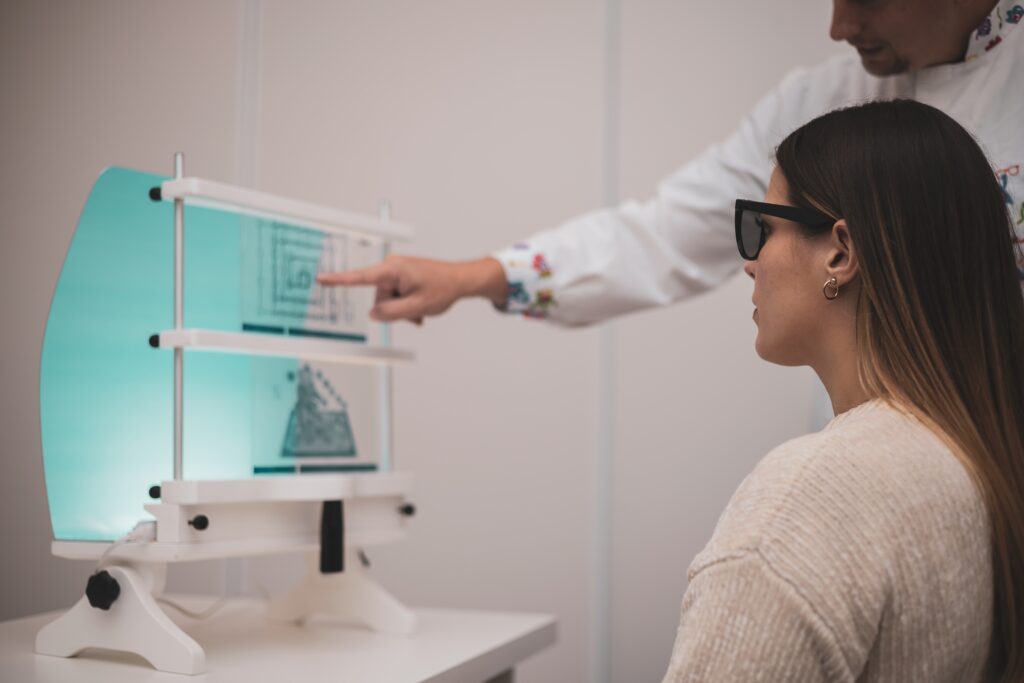

Essential Guide to Vision Therapy
If you’ve ever had your eyes checked, you know that many things can affect how well we see. Things like age, the shape and size of our eyes, and even how much sunlight we’re exposed to or the amount of screen time can all impact our vision. That’s why it’s not surprising that Vision Therapy has been used for over 50 years to treat people with certain vision problems.
Vision Therapy is a series of exercises and activities to help the visual system work better.
Vision therapy is a series of exercises and activities that help improve eyesight. These exercises are done in an optometrist’s office, making them convenient for patients with busy schedules. The optometrist will also recommend certain exercises to take home and practice independently. These exercises aim to improve different visual skills, such as depth perception and tracking. Continuously practice these exercises to aid eye health or return sight to the vision impaired.
Vision Therapy is a fun and effective way to improve vision skills, eye teaming, eye focusing and eye tracking.
Vision therapy exercises are designed to improve your ability to focus on objects at various distances or to see clearly at near, far and all distances. The process involves training your eyes to work together correctly—also known as eye teamwork or eye focusing skills. This improves hand-eye coordination by enhancing the visual information available in each eye regarding spatial relationships of objects with their environments so that you can make better judgments about where you are going when looking through an opening etc.
Vision Therapy has been used to treat lazy eyes, double vision and poor depth perception, in addition to helping children with learning difficulties.
The most common vision therapy treatments treat lazy eyes, double vision and poor depth perception. In addition to helping children with learning difficulties, vision therapy can treat eye problems that don’t appear to be a problem with the eyes.
Patients often see changes in their vision within a few weeks of starting Vision Therapy.
While the length of time will vary, depending on the vision problem and the individual’s motivation, it can take as little as a few months up to a year or more. When patients start Vision Therapy, they often see improvements in their vision within a few weeks or months, but it can also take years and decades to notice lasting changes. Some patients even report seeing their vision improve in the distant past (e.g., centuries ago).
Vision therapy is a comprehensive treatment that works well for many people of all ages, so give it a try!
So, you’re considering vision therapy. It’s not a miracle cure, but it can help many people of all ages. The key is finding the right program and doing the work.
Here are some things to keep in mind:
- Vision therapy is a treatment that works well for many people of all ages, so give it a try! It’s also convenient because these exercises are done in your eye doctor’s office or at home with your equipment—no extra time or money is spent on commuting or other expenses.
- Vision therapy is not just about reading letters; it also helps with sports and activities like driving or gardening. A successful vision therapy treatment should help you see clearly when performing daily tasks, such as reading the small print on medication bottles, spotting hazards while driving, and watching for fly balls during baseball games. It should also help you track moving objects from place to place without losing track of where they’ve gone, like watching traffic lights change while driving.
Conclusion
Over the years, the popularity and demand for vision therapy treatments have increased tremendously. This is not surprising since there is a lot of general awareness about eye health and safety issues these days. At Ambleside Family Optometry, we offer vision therapy treatments and have a highly qualified team of doctors to help improve vision using proven and modern/scientific methods. Contact us for further information or to set up an appointment today.
